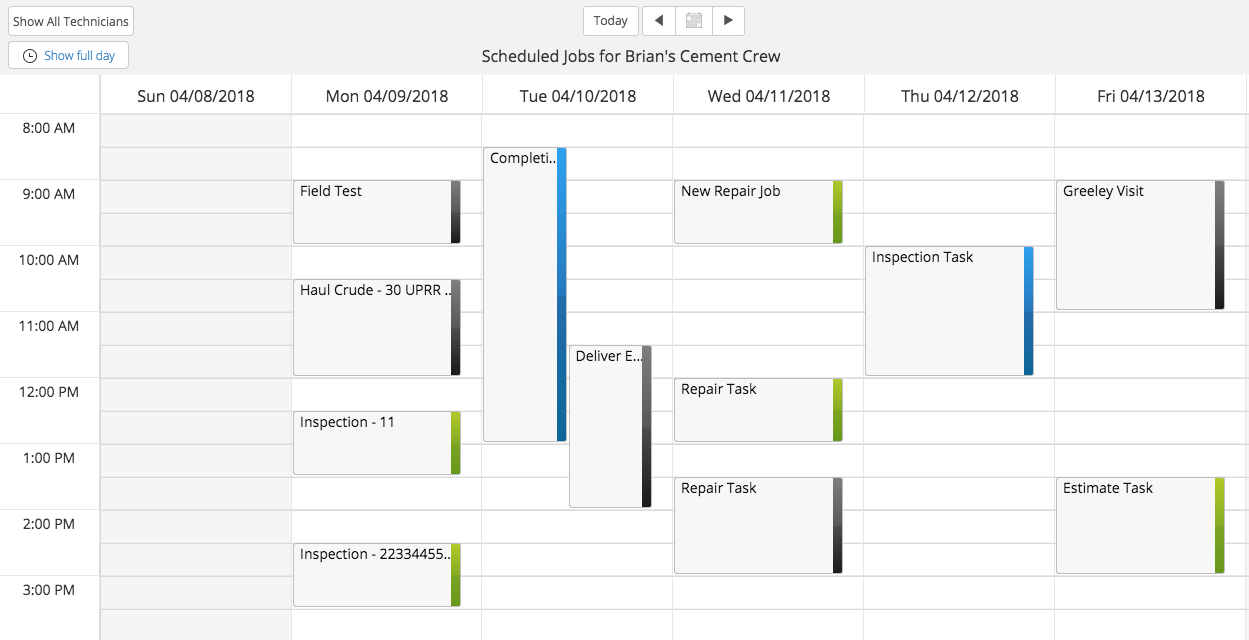
Field Service Scheduling and Route Optimization Enhancements
The latest release includes an enhancement to the Schedule view, with a new single user and asset view. Upon clicking the calendar next to a user or asset, the view of the Schedule will change to a calendar for just that one item. Displaying the time vertically provides a clearer view of a specific users’ schedule for ease of providing your dispatcher, supervisor or administrator an alternative way to conduct field workforce work order and time management. Additionally, with a direct link to the asset detail on the Schedule view, a pop-up surfaces asset information without having to leave the Schedule view.

Color Coding Custom Fields
It’s common among field service organizations such as those in health care, oil and gas or telecommunications, to maintain territories across their field worker’s contacts/customers. In health care specifically, nurses or doctors that make house calls or have multiple offices typically define territory boundaries—city, county, state, or similar—within which each representative’s customers are located. It could be that distance from the nurse or doctor must be within a certain number of miles or in the city limits, for instance.
With the ability to now color-code custom fields, it’s easier than ever to see related details displayed on the Map. Using the example above, color-coding contacts/customers assigned to each health care worker provides a high-level view of each field worker’s territory or workload on the Map view. You can also reassign a field worker’s contact/customer to another team member right from the Map. There is also a legend for ease of readability.

Customize Work Order Names
Now, you have the ability to customize a work order name based on related objects. This will automatically name your work order based on an expression, allowing you to include contact, user, asset or other data in the work order title.
Update Work Order Series Objects
In the latest release, we enhanced how you may update work order series objects. After creating a work order series, you now can update the series information itself, including change the frequency, date range and task data.




